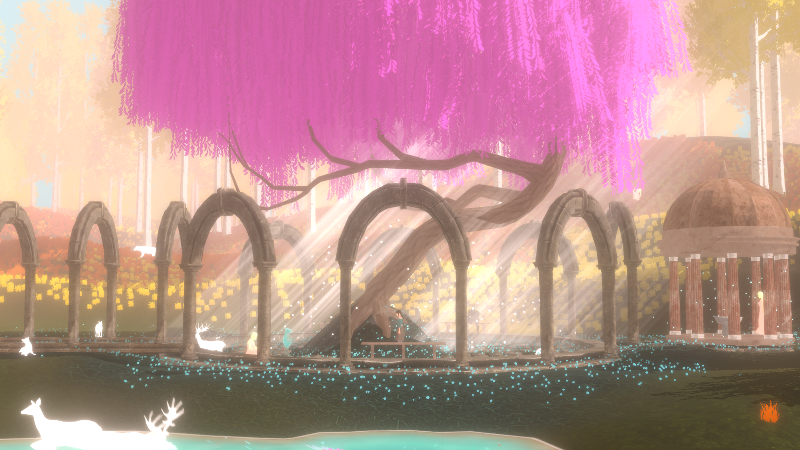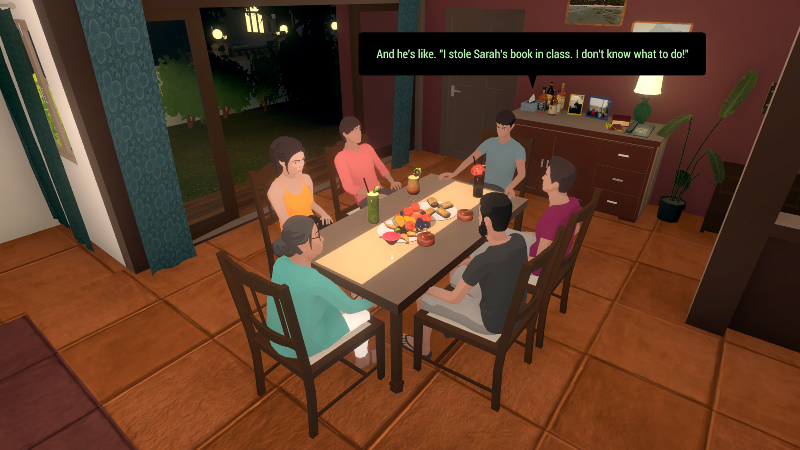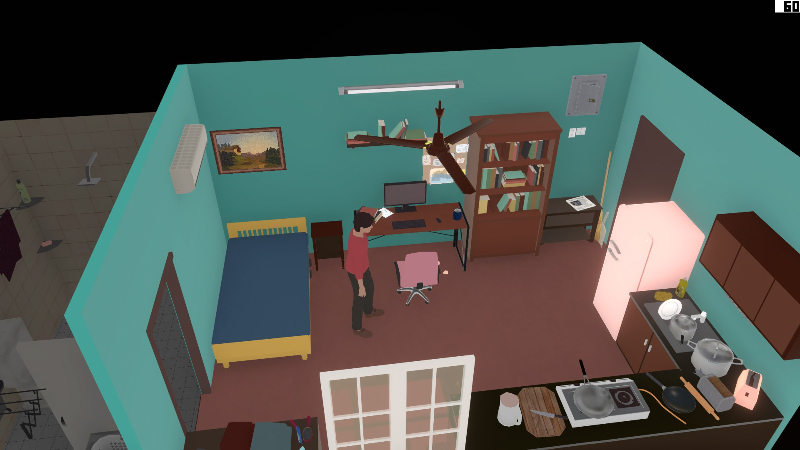There exists a rare kind of game that we don’t talk about enough in games criticism. It’s the sort that, while not without its issues, reveals the promise of a bright future from its creators.
Forgotten Fields is a great example of such a game. As its own three-hour experience, it’s a clunky, sometimes even buggy, adventure about a young man’s quarter-life crisis. But its style, writing, and sheer distinctiveness ensure Frotswood Interactive is a team to watch.
It seems to have ambitions loftier than its resources, but in spite of its flaws, and like its main character, it feels like the best may be yet to come.
Forgotten Fields Review: The Curse of Nostalgia
In Forgotten Fields, Sid is a late-twenty-something struggling to write his second book after some modest successes with his debut a few years prior. Having spent the last year of his life dodging friends huddled in his room, feeling uninspired, Sid worries his best days are behind him and the beauty he could once see in the world, which behaved as his muse, has withered away.
Now, faced with an imminent deadline to submit a writing sample for a grant he’s depending on, as well as his mother selling his childhood home, the melancholic Sid decides the best way to clear his head may be to run away to that very home before it’s gone for good.
Forgotten Fields is an adventure game and gameplay tends to be very casual. Early on, players fix up Sid’s scooter so he can embark on his cross-India day trip back home. He helps his aunt and uncle wrangle their windswept laundry when he makes a pitstop at their house. He even catches up with his former partner for a brief beach respite just months before her wedding.
Sid is a sad young man, and though the setting and much of the story feel autobiographical and fresh, his insecurity about the future is more universal. Sid is on the cusp of exiting those years where he’s still allowed to struggle with work, rent, and relationships, unreadily diving headfirst into the stage where he’s expected to have it all figured out. As he scrambles to finish his grant application before the long night is through, players live out his day as well as his story’s brainstorm in his head, moving between reality and fantasy regularly.
While this presentation is clever, the end results are less interesting. In Forgotten Fields, anytime Sid is having a conversation with another character, the game is good or even great. But whenever it asks the player to perform simple tasks, such as set the table for dinner or go swimming with his friend, a multitude of issues get in the way.
Camera struggles are constant, and the angled third-person view routinely betrays the given tasks, moving on its own and causing Sid to bump into objects. Clipping is frequent, and characters who are meant to be pulled into a scene will often get stuck on geometry and spend what might be a heartfelt moment endlessly walking into a door frame.
It made me wish for a more constrained experience where Forgotten Fields just embraced the “walking sim” genre a bit more closely and didn’t try to gamify these mundane tasks. The mundanity of them is actually fine. They even help explain Sid’s unrest with his life. But these gameplay mechanics are so often broken that it seems the small team just couldn’t get them to work as well as they envisioned.
These issues are apparent early and persist throughout the short runtime, in both Sid’s world and the fantasy world the story recurringly returns to, though like I said, a lot of what’s great about Forgotten Fields is that way because it’s authentic and even thought-provoking in spite of these issues.
The central theme of Forgotten Fields is nostalgia — how it distorts our memories, how it spoils our future, or even how it pulls us out of our present. For Sid and for his book’s hero, the intention is to escape to someplace where time stands still — literally in the case of the fantasy brainstorm.
For Sid, he can’t help but dwell on the past, wishing to be a kid again playing games in his bedroom, without the adult stressors he’s now burdened by. He feels like his friends have grown apart, his career is already tail-spinning, and there’s something missing, though the game shields players from exactly what for a good while.
Each time Sid connects with another character, the writing feels genuine and has a way of making me forgive a lot of the game’s technical flaws. It’s apparent that beneath the janky shell, there is some fantastic material worth grappling with.
Later reveals explain more of why Sid is so stuck in the past, and even each of his friends, though they may seem at first to have their heads on their shoulders more securely than Sid, eventually reveal they’re all going through something similar. “Aren’t we all?” implies the game through its story.
Neither Sid nor any of his friends can help but look back, recalling the supposed “good times,” while side-eyeing the future with the expectations of declinism, as one character even refers to by name. These scenes, sitting around the dinner table, helping Sid’s mom prepare dinner, borrowing some cups from a nearby boater so you can drink at the beach, et al, are never interesting ludologically but always gripping narratively.
No matter the scale, humans seem doomed to always look back on the past with fondness and toward the future with dubiousness, but this is merely a bias, really a survival instinct, we possess to keep us ever-striving for something more. Sid’s struggle to let go of his rose-colored view of his past is well worth exploring if you can forgive the game’s own struggles with gameplay in the present.
Forgotten Fields Review — The Bottom Line
Pros
- Well-written story about the spell of nostalgia
- Authentic characters in a unique setting
Cons
- Gameplay issues abound, including clipping, wonky camera, and musical cues that seem cut short
- Gamifying things like doing the dishes or the laundry can work, but don’t do so here
In Forgotten Fields, I see a few things. Primarily, I see a game very well-written with some bittersweet moments that can be almost tear-jerking at times. I also see gameplay ambitions that outmatch the team’s resources, leaving it all feeling quite uneven by the time credits roll.
Looking to the future, as Sid so often refuses to do with any sort of optimism, I find myself much more excited to see what this team does next. There are real moments of beauty in Forgotten Fields, even as one must sort through some of its mishaps to appreciate them.
[Note: Frostwood Interactive provided the copy of Forgotten Fields used for this review.]










Published: Apr 13, 2021 06:44 pm